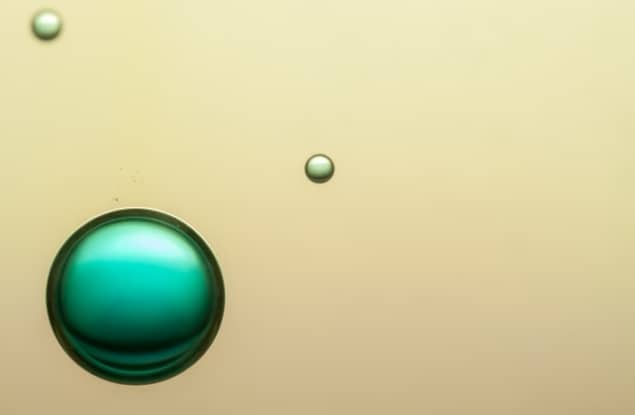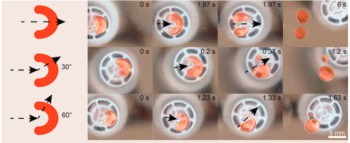
The temperature of supercooled liquid water has been measured accurately for the first time at temperatures below –40 °C. Researchers led by Robert Grisenti at the University of Frankfurt in Germany have measured the resonance peaks of light waves inside microscopic water droplets to reliably calculate a temperature of –42.55 °C. Their work is an important step towards producing more reliable climate models, which rely on understanding how ice forms in the atmosphere.
Under the right conditions, we have known for centuries that water can be supercooled well below 0° C without freezing. However, as temperature decreases, the rate of ice crystal formation increases rapidly, which has made it difficult to determine the lowest possible temperature of liquid water. This had limited the study of supercooled water to temperatures of about –38 °C and higher.
Light scattering
Grisenti’s team combated ice formation by creating a jet of micrometre-sized water droplets inside a vacuum. On this scale, evaporation cooled the water in the droplet much faster than ice could form. “The easiest way to determine the temperature of a spherical droplet was to measure its size, which can be accurately determined by exploiting the presence of an interference pattern in the light scattered by the droplet,” Grisenti tells Physics World.
Inside spherical droplets of certain diameters, standing light waves are formed, which produced distinctive resonance peaks in the optical spectrum of the droplet. If a droplet froze, its shape would become irregular, meaning standing waves could no longer form.
Shifting peaks
The team found that the resonance peaks shifted to smaller wavelengths over time. This meant the droplets were shrinking, and therefore remained liquid as they cooled. By calculating the amount of heat lost in evaporation, they could precisely quantify a supercooled water temperature of –42.55 °C for the coldest droplets.
The conditions created in the experiment closely resemble those in the Earth’s upper atmosphere. In the future, the research could lead to a better understanding of atmospheric ice formation, and to more reliable predictions for the Earth’s changing climate.
The research is described in Physical Review Letters.



